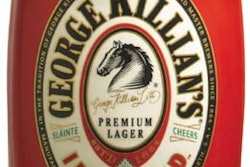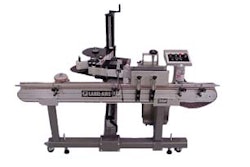Manufacturers of a wide range of anti-microbial products are trying to stamp out aspects of a pesky U.S. Environmental Protection Agency (EPA) proposed rule. That’s because, if it becomes final, it will take a bite out of product label copy.
“It is fair to say that hundreds of consumer and industrial products will have to change their labels if this proposed rule becomes final,” states Charla Gervers, regulatory team leader for S.C. Johnson & Sons, Inc., Racine, WI. Packages that could be affected range from those for toilet-bowl cleaners and kitchen top cleaning solutions to food processing line sanitizers to pulp and paper anti-tearing agents.
The EPA proposal lists terms that can’t be used on any label, terms that can’t be used on “public health” products and terms that can be used on nonpublic health products if they are properly qualified. Terms like “hospital strength” and “industrial strength” are prohibited, for example.
Probably the most controversial aspect of the proposed rule issued by the EPA last September (the comment period closed in February) dealt with “public health claims” that companies could not make in label copy. In the proposal, the agency said it wants to outlaw terms such as “biocide,” “microbiocide” and “mildew-proof.” Nor could these terms be used in the name of any product.
The rule’s background
This proposal could present far-reaching problems for many companies. Dow Chemical, for example, sells a line of biocides called “Dowacide.” Would that label have to be changed? A Dow spokeswoman was unwilling to answer or even speculate. Jean Frane, the EPA official in charge of the rulemaking, says she does not know if the agency would allow Dow, or any other company, to keep a product name with an “icide” suffix.
Frane says that EPA is required to issue a final rule by September, a deadline the agency finds “pretty tight.” That means it may be missed. If so, it probably wouldn’t upset industry at all.
The EPA proposed rule stems from the Food Quality and Protection Act (FQPA) passed in 1996 by Congress. In general, that law sought to make it easier for companies to get quicker approval for anti-microbial products while assuring the public that those products are safe. The most controversial aspect of the proposed rule is the EPA requirement that anti-microbials be re-registered every five years. But the portion of the proposed rule dealing with terms that can and can’t be used on labels has also drawn heated comment.
The FQPA has not been a particularly high-profile environmental law. So the EPA’s slow pace in getting the necessary federal rules written, proposed and commented on hasn’t drawn much complaint. However, former Sen. Bill Bradley has attempted to peck away at Vice President Al Gore’s environmental credentials by pointing to the snail’s pace at which rules were written following passing of the 1996 law. That criticism could encourage the EPA to make a special effort to finalize this rule and some of the others stemming from the FQPA.
Terms for copy
Industry groups will certainly press the EPA to ease its restrictions on words like biocide in any final rule. The proposed rule bans the term except for its use on nonpublic health products, and then it must be properly qualified. That “out” for nonpublic health products—which the EPA does not clearly delineate—has set off a hectic scramble by manufacturers of industrial and commercial products to establish their bona fides as nonpublic health products.
On the other hand, there are some terms that can be used only on public health products. One is germicidal; if it is used, the label has to identify specific germs that will be zapped. Bob Israel, director of product safety, environment and regulatory compliance for Johnson Wax Professional, Sturtevant, WI, says some of his industrial/institutional cleaning products such as ENVY, a germicidal foam, would pass muster with EPA based on their current labels.
Many paint labels, on the other hand, contain the term “mildew-proof,” which the EPA wants to outlaw. The EPA does not argue, at least not directly, that mildew-proof or “germ-free”—also slated to become a prohibited term—stray into the public health area. Rather, the EPA objects to those terms because they “imply indefinite or all-encompassing anti-microbial protection against bacteria, fungi or algae.” In other words, it views the terms as lies.
Challenging EPA
David Sarvadi, an attorney with Keller & Heckman, the Washington law firm that represents many packaging suppliers and resin manufacturers, also represents William Zinsser & Co., which manufactures paints and coatings. Sarvadi complains that the EPA has failed to offer proof of its assertions that claims like mildew-proof are “all-encompassing,” nor has the agency charged any internal or external scientific body with making that determination.
It has simply materialized out of thin air. “Accordingly, to adopt such a position, in a truncated sham proceeding, would be arbitrary and capricious,” Sarvadi counters.
Sarvadi’s general theme is echoed by the National Paint and Coatings Assn. (NPCA). Heidi McAuliffe, counsel for government affairs for the NPCA, says the EPA is objecting to mildew-proof because it considers it a public health claim, even if the agency does not use those words.
“NPCA vehemently disagrees with this characterization,” she explains. “The statement or claim ‘mildew-proof’ is not per se a public health claim without some additional language or label content specifically addressing an impact on public health.”
Unlike mildew-proof, the terms biocides and anti-microbials could be used for certain nonpublic health products if the words are properly qualified. These exceptions would typically be for products such as anti-microbials for use on a food processing line or in the cooling tower of a manufacturing plant.
Another catch
But there is a Catch-22. Has Shah, manager of the biocides panel at the Chemical Manufacturers Assn. (CMA), says the EPA may consider those and many other industrial products as public health products (thereby banning the use of the term biocide) because those products provide Maximum Inhibitory Concentration values for numerous organisms in their labeling. But he argues that the provision of MIC data to end users does not make those products “public health” products.
Moreover, even if the EPA were to agree that industrial biocides are nonpublic health products, the requirement that the term “biocide” be qualified “raises serious legal concerns.” “The idea of stating what a product is ‘not’ is generally viewed as unnecessary and raises the question of why the manufacturer did not list other things the product is ‘not’ intended to be or do,” explains Shah. “Thus, this creates an inconsistency in labeling practice among products and could potentially lead to increased product liability exposure.”
Besides edicts on when terms such as biocide can be used, the EPA proposal addresses another important label question: how users should be warned about the toxicity level of the product. The agency would require the most toxic products, those in Toxicity category I, to use the signal word “DANGER” on the front panel of the label. In addition, if the product is in category I because of its oral, inhalation or dermal toxicity, the word “Poison” must appear in red on a background of distinctly contrasting color, and the skull and crossbones symbol must appear in immediate proximity to the world.

























